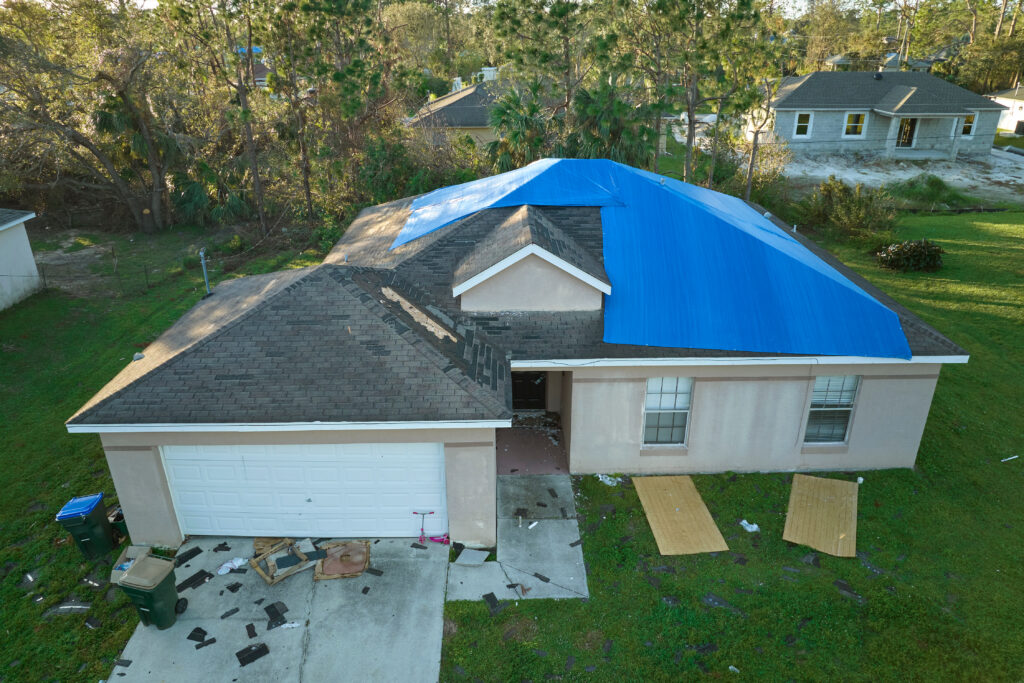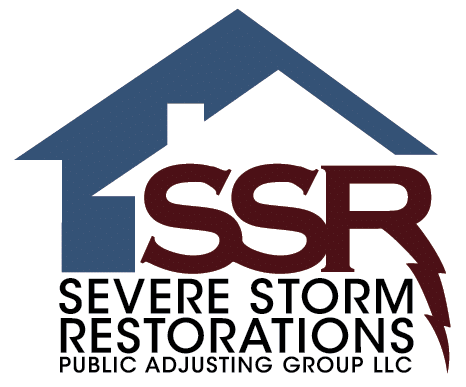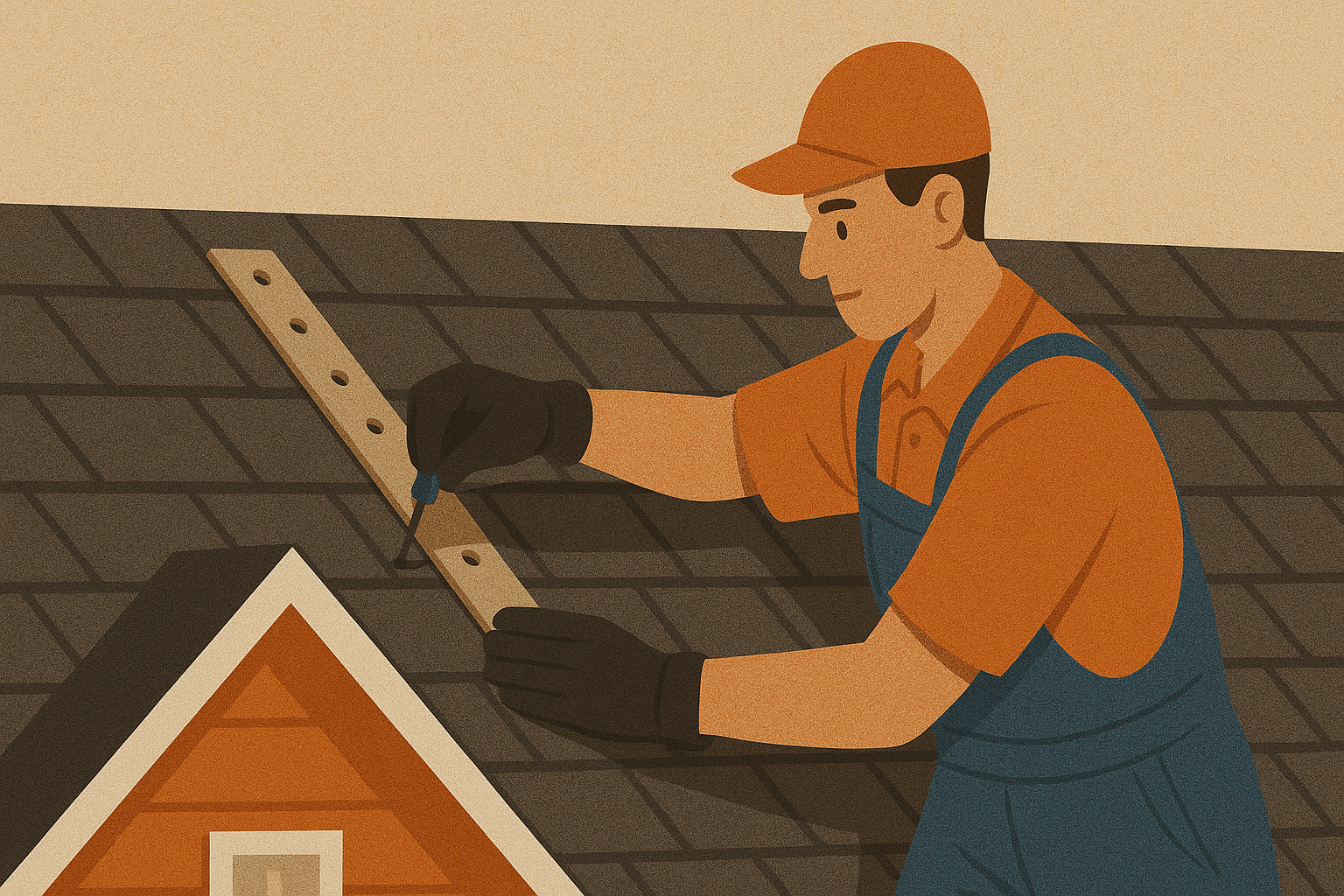Your roof is built to withstand harsh weather conditions, but it can also attract unwanted guests in the form of wildlife. Squirrels, birds, raccoons, and even bats often seek shelter in attics and roof spaces, particularly during extreme weather or nesting seasons. While their presence may seem harmless at first, these animals can cause significant damage over time, leading to what is known as animal damage.
From chewing through shingles and burrowing into insulation to clogging gutters with nests and debris, wildlife can weaken your roof’s structural integrity. Left unaddressed, animal-related roof damage can lead to leaks, mold growth, and costly repairs. Additionally, some animals carry diseases or pests that can spread to your home’s interior, further contributing to the risks of animal damage.
Understanding how to deter these animals, recognizing the warning signs of an infestation, and taking proactive steps to protect your roof will save you time, money, and stress in the long run. In this guide, we’ll explore practical ways to safeguard your roof from wildlife damage and prevent animal damage to your home.
Why Animals Target Your Roof
Before diving into prevention methods, it’s essential to understand why animals are attracted to your roof in the first place. Wildlife isn’t invading your home randomly—there are specific reasons your roof might be appealing to them.
1. Shelter and Nesting Areas
Many animals look for warm, dry, and hidden places to nest, particularly during colder months or breeding seasons. Your attic, soffits, and roof vents provide an ideal refuge from harsh weather and predators. Birds often build nests in gutters or ventilation openings, while raccoons and squirrels can burrow into attic spaces to raise their young.Squirrels and Raccoons in the Attic
Squirrels and raccoons are notorious for breaking into attics through weak roof areas, soffits, and vents. They use insulation and stored items to create nests, often chewing on wooden beams and electrical wiring in the process. Once inside, they may reproduce, leading to a larger infestation over time.
Birds Nesting in Gutters and Vents
Birds often seek out high, undisturbed areas to build their nests. Gutters, roof vents, chimneys, and even inside attic openings provide the perfect location for nesting. While birds may seem harmless, their nests can block ventilation systems, leading to moisture buildup, poor airflow, and even fire hazards if located near heating elements.
Rodents Seeking Shelter
Mice and rats can squeeze through small gaps around roofing materials, ventilation ducts, and fascia boards. Once inside, they gnaw on insulation and electrical wires, potentially causing fire hazards and structural damage. Rodents also leave behind droppings and urine, creating unsanitary conditions inside your home.
Bats Roosting in Eaves and Rafters
Bats may enter through small gaps in the roofline or attic vents, seeking dark and secluded spaces for roosting. While beneficial for insect control, bats can introduce health risks due to guano buildup, which may contain harmful bacteria and fungi.
The Risk of Infestations
If left unchecked, these animals can cause extensive damage to your roof, attic, and home structure. Beyond physical damage, infestations may lead to unpleasant odors, increased allergens, and the spread of diseases through droppings and nesting materials.
Understanding why animals are drawn to your roof is the first step in preventing them from turning your home into their own shelter. Implementing proactive measures will help safeguard your roof and attic from these unwanted guests.
2. Easy Access to Food

If your property provides easy access to food, animals will be more likely to frequent your home and eventually seek shelter nearby. Open garbage bins, compost piles, bird feeders, and fruit trees are some of the most common attractants that draw wildlife into residential areas. Once animals establish a routine of visiting your property for food, they may decide to stay by nesting on your roof, inside your attic, or within your gutters.
Bird Feeders and Fallen Seeds
While bird feeders are a great way to attract beautiful birds to your yard, they can also lure unwanted wildlife like squirrels, raccoons, and rodents. These animals often scavenge fallen seeds, and if they find an easy food source near your home, they may look for shelter in your roof or attic. Installing squirrel-proof bird feeders or regularly cleaning up fallen seeds can help minimize this risk.
Unsecured Trash and Compost Bins
Garbage bins and compost piles can be an all-you-can-eat buffet for raccoons, opossums, and rodents. If lids are loose or bins are easily accessible, animals will dig through them for food scraps. Once they associate your home with a steady food supply, they may start looking for ways to enter your roof or attic for shelter. Securing trash bins with tight-fitting lids and storing them in a garage or shed can prevent this issue.
Fruit Trees and Garden Vegetation
Overripe or fallen fruit from trees can attract a wide variety of animals, including squirrels, raccoons, and even deer. These animals may climb onto your roof in search of more food or shelter. To prevent this, regularly clean up fallen fruit and consider using protective netting on trees to limit easy access.
Pet Food Left Outdoors
Leaving pet food or water dishes outside can attract stray animals and wildlife. Raccoons, skunks, and even rats may begin to visit regularly if they find a reliable source of food. Feeding pets indoors and removing leftover food promptly can help discourage these unwanted visitors.
Minimizing Attractants
To prevent animals from viewing your home as a reliable food source, be proactive about managing potential attractants. Keeping outdoor areas clean, securing trash bins, and limiting accessible food sources can make a significant difference in keeping wildlife away from your roof and attic.
3. Safe Passage and Climbing Routes
Animals often use nearby structures as pathways to your roof, making it easier for them to find entry points and establish nests. Tree branches, utility lines, fences, and even outdoor furniture can serve as convenient highways for squirrels, raccoons, and rodents. Once these animals gain easy access to your roof, they can exploit small openings in eaves, vents, or chimney caps to make their way inside.
Tree Branches as Launch Pads
Squirrels and raccoons are natural climbers, and tree branches extending over your roof provide the perfect access point. Squirrels can leap up to 10 feet from a branch to a roof, while raccoons are strong enough to climb vertical walls. Trimming branches so they are at least 6–10 feet away from your roof can prevent animals from using them as bridges.
Utility Lines and Power Cables
Some animals, particularly squirrels, use power lines and utility cables as walkways. If they frequently travel along these lines near your home, they may eventually make their way to your roof in search of shelter. While utility companies may offer protective measures like squirrel guards, homeowners can also install baffles or deterrents to make power lines less appealing to wildlife.
Fences and Outdoor Structures
Fences, sheds, pergolas, and even stacked firewood can serve as stepping stones for animals to climb onto your roof. Raccoons, known for their dexterity, can use almost any structure as a ladder. Keeping fences and structures away from your home’s exterior and using smooth, unclimbable materials can help reduce access points.
Gaps and Openings: The Perfect Entry Points
Even if an animal gets onto your roof, it won’t be a problem unless it finds a way inside. Small openings in soffits, fascia boards, vents, and chimneys provide easy access for wildlife. Many animals only need a tiny gap to squeeze through—squirrels can enter through a hole as small as 2 inches in diameter, while mice can fit through an opening the size of a dime. Regularly inspecting and sealing these potential entry points with durable materials like metal flashing or heavy-duty mesh can prevent infestations.
Prevention is Key
The best way to stop animals from accessing your roof is by limiting their pathways. Trimming trees, securing power lines, and reinforcing weak spots on your roof will make it harder for wildlife to climb, jump, or squeeze their way in. Being proactive in these efforts will help safeguard your home from unwanted guests.
4. Heat and Insulation
During winter, animals seek warmth wherever they can find it. Roofs and attics often retain heat, making them particularly attractive during colder months. Even small gaps in roofing materials or soffits allow animals to slip inside and take advantage of the insulation, creating cozy nesting spots.
By understanding these common attractants, homeowners can take targeted steps to eliminate the factors that make their roofs inviting to wildlife. The next step is implementing effective prevention methods to keep animals away before they cause costly damage.
Common Signs of Animal Damage on Your Roof

Detecting animal activity early can prevent costly damage to your roof and home. Wildlife infestations often start small, but if left unchecked, they can escalate into major structural problems. Here are some common signs that indicate animals may be causing trouble on your roof:
1. Scratching or Scurrying Noises
If you hear scratching, scampering, or rustling sounds coming from the attic, ceiling, or walls—especially at night—this could be a sign of rodents, squirrels, or raccoons nesting in your home. Nocturnal animals, such as raccoons, are most active after dark, while squirrels tend to be more noticeable during the early morning and evening.
2. Damaged or Missing Shingles
Animals trying to gain entry into your attic may claw, chew, or pull up shingles to create an opening. Damaged shingles can expose your home to water leaks, mold growth, and insulation deterioration. If you notice loose or missing shingles, it’s essential to inspect your roof for further signs of animal intrusion.
3. Clogged or Detached Gutters
Birds, rodents, and squirrels often build nests in gutters, leading to blockages that cause water to overflow. Excess debris, such as twigs, leaves, and nesting materials, is a strong indicator that animals are using your gutters as shelter. Additionally, raccoons may pull down or detach gutter sections as they attempt to climb onto the roof.
4. Vent or Chimney Damage
Roof vents, soffit vents, and chimneys are common entry points for animals seeking shelter. Torn or bent vent covers, missing mesh screens, or displaced chimney caps can indicate that a raccoon, squirrel, or bird has been attempting to enter your attic. These openings provide easy access for nesting and can lead to extensive interior damage.
5. Droppings and Foul Odors
Animal droppings in or around your attic, roof, or gutters are clear indicators of an infestation. Raccoons, squirrels, and rodents leave behind urine and feces, which can create strong odors, stain insulation, and pose health risks to your family. If you detect a musty or ammonia-like smell in your attic, it could be a sign of wildlife activity.
If you notice any of these warning signs, it’s time to take immediate action to prevent further damage. The next step is implementing effective prevention strategies to keep wildlife from returning to your roof.
How to Prevent Animal Damage to Your Roof
1. Trim Overhanging Tree Branches
Tree branches provide a convenient access point for squirrels, raccoons, and even birds to reach your roof. By trimming branches that extend too close to your home, you can significantly reduce the likelihood of animals climbing onto your roof.
✔ Keep a Safe Distance: Cut back tree branches at least 6–10 feet away from your roofline to prevent animals from leaping onto your home.
✔ Remove Weak Limbs: Dead or overgrown limbs pose a dual threat—they serve as climbing pathways and can break off during storms, causing direct roof damage.
✔ Schedule Regular Maintenance: Inspect and prune trees near your home at least twice a year to keep overgrowth under control.
2. Install Gutter Guards
Gutters can become nesting spots for birds, rodents, and insects if left unprotected. Nesting materials, leaves, and debris can clog gutters, leading to improper drainage and potential water damage.
✔ Install Mesh Guards: Adding a gutter guard system prevents animals from nesting while allowing water to flow freely.
✔ Keep Gutters Clean: Regularly remove twigs, leaves, and nesting debris to discourage birds and rodents from settling in.
✔ Check Downspouts: Ensure downspouts remain unclogged so rainwater flows away from your home, reducing standing water that attracts pests.
3. Secure Roof Vents and Chimneys
Roof vents and chimneys are common entry points for animals looking to nest in warm, sheltered areas. Without proper protection, raccoons, squirrels, and birds can squeeze into these openings.
✔ Reinforce Vents: Install heavy-duty metal vent covers or wire mesh to keep wildlife from entering through attic vents or exhaust pipes.
✔ Protect Chimneys: A chimney cap prevents birds, squirrels, and raccoons from nesting inside while allowing smoke and air to escape.
✔ Inspect Regularly: Check for bent, torn, or missing vent covers and replace any damaged components immediately.
4. Repair Holes and Gaps
Even small openings in your roof structure can serve as entry points for wildlife. Squirrels and rodents can fit through holes as small as two inches, while birds and bats need even less space.
✔ Seal Eaves and Soffits: Use hardware cloth, steel wool, or metal flashing to close off gaps along the roofline.
✔ Check Around Skylights and Pipes: Any cracks or gaps around roof penetrations like plumbing vents or skylights should be sealed with weatherproof materials.
✔ Reinforce Weak Areas: Animals may gnaw or scratch their way through deteriorating materials, so replace old fascia boards and rotting soffits as needed.
5. Remove Food Sources
Animals are more likely to target your roof if they find an easy food source nearby. Reducing food availability makes your home less attractive to wildlife.
✔ Secure Trash Bins: Use animal-proof trash cans with tight-fitting lids to prevent raccoons and rodents from scavenging.
✔ Limit Bird Feeding: Position bird feeders away from your home and avoid overfilling them, as spilled seeds attract squirrels and rodents.
✔ Store Pet Food Properly: If you leave pet food outdoors, bring it inside overnight to prevent attracting unwanted visitors.
6. Install Motion-Activated Deterrents

Wild animals dislike sudden movements, bright lights, and unexpected noises. Motion-activated deterrents can startle them and prevent them from climbing onto your roof.
✔ Use Motion-Activated Lights: Bright LED floodlights can scare off nocturnal animals like raccoons.
✔ Install Sprinklers: Motion-triggered water sprinklers can keep squirrels and raccoons from frequenting your yard.
✔ Try Sound Deterrents: Ultrasonic sound devices emit high-frequency noises that deter animals without being disruptive to humans.
✔ Fake Predators: Place owl or hawk decoys in visible areas to discourage birds and rodents from approaching.
7. Use Non-Toxic Animal Repellents
Natural and commercial repellents create an unpleasant environment for wildlife without causing harm. These solutions work best when combined with other prevention methods.
✔ Natural Repellents:
- Cayenne pepper or vinegar can be sprinkled near common entry points to deter animals.
- Predator urine (fox or coyote) can be used to create the illusion of a dangerous environment.
- Citrus peels or peppermint oil are effective deterrents for squirrels and rodents.
✔ Commercial Repellents:
- Rodent and bird deterrent sprays can be applied around vents, gutters, and roof edges.
- Granular repellents can be spread near trees, fences, and attic access points.
8. Conduct Regular Roof Inspections
A proactive approach to roof maintenance is the most effective way to prevent animal-related damage. Conducting regular inspections helps you catch early signs of infestation before they escalate.
✔ Perform Seasonal Inspections: Examine your roof twice a year—once in the spring and once in the fall.
✔ Look for Warning Signs: Check for chewed shingles, droppings, nesting debris, or damaged vents.
✔ Schedule Professional Inspections: If you suspect a wildlife infestation, hire a roofing expert or wildlife control specialist to assess the situation and recommend appropriate solutions.
Keep Your Roof Critter-Free
Wildlife damage to your roof can lead to costly repairs and potential safety hazards. By implementing these prevention strategies, you can protect your home from unwelcome visitors while ensuring your roof remains in excellent condition.
✔ Trim tree branches to remove climbing access points.
✔ Install gutter guards to prevent nesting and debris buildup.
✔ Secure vents, chimneys, and entry points with protective covers.
✔ Eliminate food sources to make your home less attractive to animals.
✔ Use deterrents like motion-activated devices and natural repellents.
✔ Inspect your roof regularly to catch potential problems early.
By staying proactive and addressing these issues before they become severe, you can maintain a safe, damage-free home and keep wildlife where they belong—outside!
What to Do If Animals Are Already Nesting in Your Roof
If you discover that squirrels, raccoons, or birds have already made a home in your attic or roof, take the following steps:
1️⃣ Confirm the Infestation – Listen for noises, inspect entry points, and look for droppings or nesting materials.
2️⃣ Avoid Sealing Openings Immediately – Trapping animals inside could lead to further damage.
3️⃣ Use Humane Removal Methods – Contact a wildlife control professional to safely remove the animals.
4️⃣ Clean & Sanitize the Area – After removal, disinfect affected areas to eliminate bacteria and odors.
5️⃣ Seal Entry Points – Once the animals are gone, close off openings with durable materials to prevent re-entry.
Final Thoughts
Animal damage to your roof can lead to costly repairs, energy inefficiency, and potential health hazards. By taking proactive measures—such as trimming trees, securing vents, and eliminating food sources—you can effectively deter squirrels, birds, and raccoons from turning your roof into their home.
Regular inspections, proper maintenance, and the use of humane deterrents will help keep your roof in excellent condition and free from unwanted guests.
If you suspect an animal infestation, don’t wait for the damage to worsen—contact a professional to assess and resolve the issue quickly. With the right preventive strategies, you can enjoy a safe and secure home for years to come.


